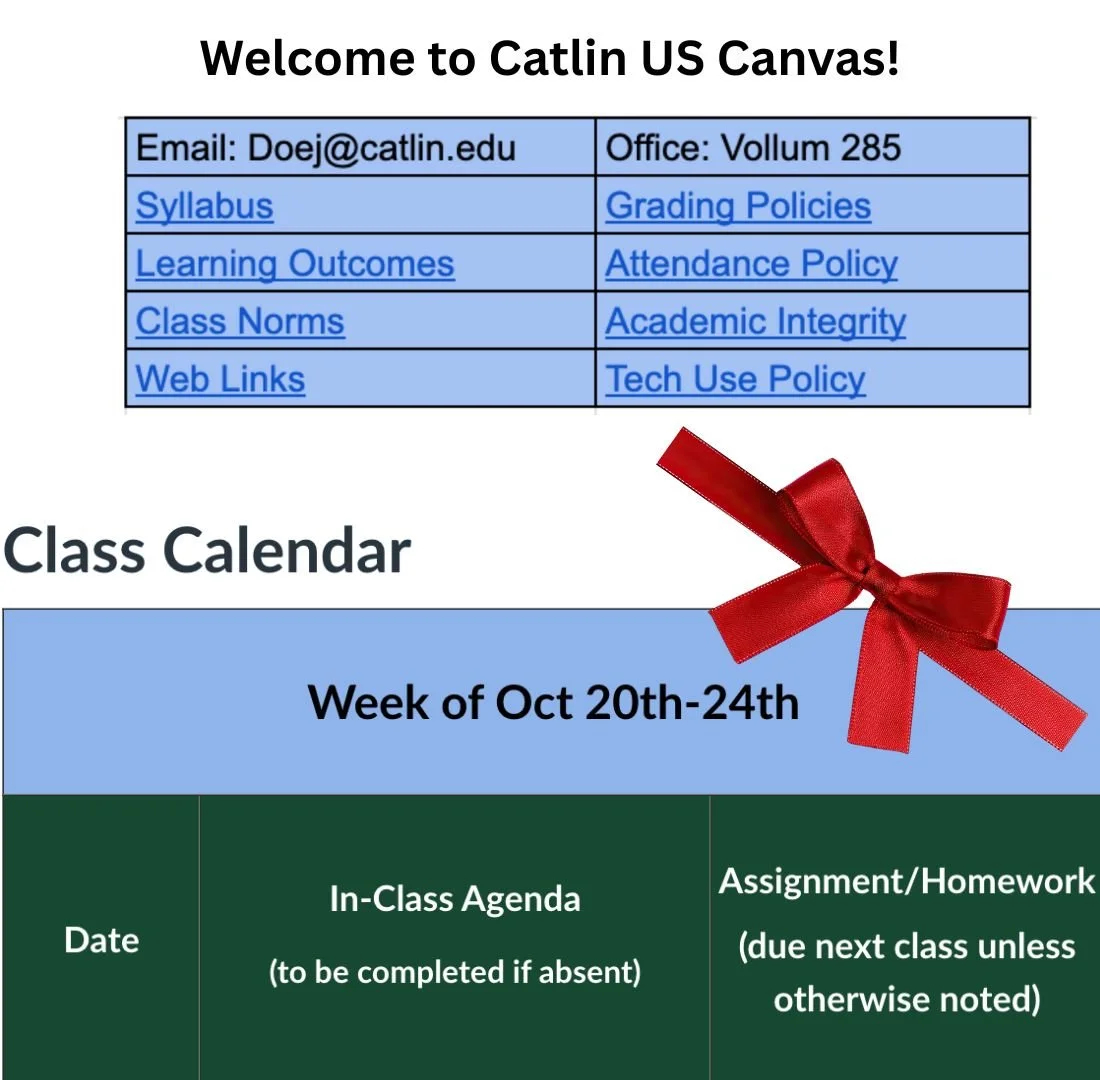OPINION: We need to remove the calendar and dashboard from Canvas
By August Walrod ‘26
Courtesy of August Walrod.
At the beginning of this school year, experimental changes which standardized Canvas pages received mixed reactions. Academic Dean Shannon Rush has facilitated the changes which were influenced by student input.
I believe that the recent changes to Canvas are a good start, but that in future years, the calendar and dashboard features should be removed. All past, current, and near-future classwork should solely be linked on the homepage according to the provided accessibility guidelines.
There are three main changes to Canvas: the addition of a course agenda with key links at the top of each class homepage, the removal of unused features like the “modules” tab, and a shift towards only major assignments being listed as assignments for juniors and seniors. Rush states that the new Canvas format is meant to bring clarity to students and build their agency.
The assignments page of Canvas.
Courtesy of August Walrod.
The modified Canvas pages are divisive among the student body. In a randomized survey polling the Upper School student body that received 25 responses, 32% of students stated their experience with Canvas had worsened, while the remaining 68% held a neutral or favorable opinion of the updates.
One student recommended in the survey that Catlin Administration should return to having all homework as assignments, as only some assignments are listed in Canvas for juniors and seniors. This sentiment is particularly common among students who use the calendar and dashboard features in Canvas. While I acknowledge the ease and quickness of the calendar and dashboard, in their current form of only showing some assignments, students who still utilize the features will miss key information.
Hadley Cress ‘27 explains how the calendar and dashboard are only useful when fully updated. She has since switched to using the homepage, saying in the past “If homework was just put on the homepage and not on the dashboard I would miss it.”
Despite one goal of adding a school-wide course agenda layout being standardization, a major concern from students was the inconsistency between Canvas pages. Rush emphasizes that the changes are still in progress and some teachers have not had the opportunity to update their Canvas layouts yet.
Brandon Harad ‘27 feels that the standardized course agendas have made it harder to find important information in some respects because there are slight differences among similar formats instead of each class having a distinct and memorable setup. Harad believes that not all teachers follow the guidelines because of the large amount of work it takes to implement. He also highlights the importance of teachers’ autonomy in designing their Canvas pages, claiming that “basic guidelines” would be a sufficient amount of direction given to teachers.
The new format was also meant to reduce teachers’ workload. Science teacher, Morgan Kerr-Staudinger, states that because she had already created all the needed assignment templates, the changes have not reduced the “clicking time” for the creation and distribution of assignments. She mentions however, that the restructuring to the grading process has reduced her time spent grading.
Throughout my research into how Canvas is currently set up through interviews, and student surveys, I found that there was one glaring issue: canvas is too complicated. Placing assignments, course information, and important links in multiple places is an extraordinary amount of work for teachers and it confuses students.
While the calendar and dashboard features may be a better way to visually represent certain assignments and speed up student’s search for homework, the weekly agenda on homepages serves as a more comprehensive tool for relaying the information students need in a convenient way for teachers.
Teachers would invest a lot of time into keeping the weekly agenda current, but knowing they only need to focus on that one part of Canvas would reduce stress. Teacher buy-in would increase as a result, creating an easier path towards consistency across Canvas pages.
Students would also benefit from knowing they can focus on one area of Canvas. I acknowledge that some students may have issues with not having the visual overview that the calendar feature provides, and that many students value the simplicity of the dashboard. I believe, though, that as the individual class’s homepages are also designed for accessibility, if they become the sole place where teachers include class work, remaining accessibility needs could be addressed.
The changes from last year are progressing towards better use of Canvas, and Catlin Admin already plans on reviewing the data on the impact of the changes. It is crucial that during all future changes, the focus is on teachers’ choice, student accessibility, and the importance of time. Ultimately, the removal of the calendar and dashboard is instrumental in pursuing those goals.


